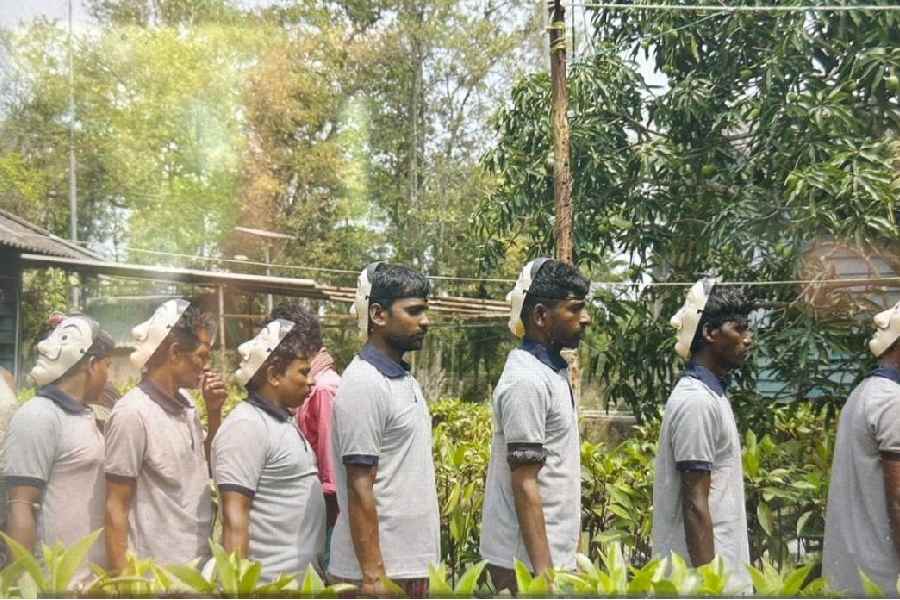Honey collection in the Sunderbans has more than doubled compared with last year, said forest officials.
"This year's yield stands at around 38 metric tonnes. Last year, the volume was around 16 tonnes," said an official of the West Bengal Forest Development Corporation (WBFDC), the agency in charge of processing, packaging and selling the honey collected from the mangroves in the retail market.
Two cyclones, in 2020 and 2021, had wreaked massive damage on the mangrove ecosystem. Combined with the Covid pandemic, they had crippled the supply chain.
"The insect population and beehives were not spared in the cyclones. In 2020 and 2021, there were not enough flowers to attract the bees. Things had started improving last year. This year, the flowering seems much better. Honey collection depends on factors beyond human control. The past couple of years have seen a lot of damage to the ecosystem. Nature has its own way of balancing things. Now, that seems to be in the works," said a forest department official.
Every year, honey collection happens for about a month in summer, usually between April and May. Honey collectors, called moulis, split in groups and scurry the mangrove maze for honey. During the course of the expedition, the moulis eat and sleep on their boats stocked with food, fuel and other essentials. They enter the forest, harvest honey from the beehives and return to the boats.
When the collectors find a suitable spot, they cover their faces with gamchas and prepare a bundle of leaves of mangrove date palms. The bundle is lit. The smoke catches the bees off-guard, thereby reducing the chances of the moulis getting stung.
They must wear a mask at the back of to fool tigers who usually attack from behind.
This year, honey collection started at the Sundarban Tiger Reserve on April 7. Around 200 moulis, split into over two dozen groups, were granted licences to collect honey from forests in the Basirhat range of the STR. Around 100 moulis split into groups were at work in the jungles of the South 24-Parganas forest division from March 29.
Both drives lasted a month, said forest officials.
The collection was around 24 tonnes in STR and 14 tonnes in the South 24-Parganas division, said officials.
Santosh Munda, 67, a resident of Kumirmari village, on the fringes of STR, led a group of eight moulis into the forest. "We collected around eight quintals (800kg) of honey. The collection was far more than last year, thanks to a bumper bloom of khalsi flower," said Munda.
Bees that gather nectar from the khalsi flower (Aegiceras corniculatum) are believed to be the source of the best honey in the Sunderbans.
Munda's group fetched over Rs 1,50,000 for the honey they collectedForesters said there are multiple kinds of bees in the mangroves. Among them, the Apis dorsata makes more hives and honey, according to biologists.

File picture of boats of honey collectors in the Sunderbans
The honey is tested for moisture content and packaged accordingly.
“Till last year, we paid Rs 200 per kilo for the best quality honey. From this year, we have increased the rate to Rs 275 per kilo,” said the WBFDC official.
The honey is processed at a plant of the corporation in Salt Lake.
Within a month, the honey will be available for sale at retail counters across the state. Sold under the brand name of Mouban, a 500g jar will cost around Rs 265 and a 250g jar will cost Rs 144, he said.
For now, the honey will be sold from retail outlets at more than 30 eco-tourism centres in Bengal, several zoos and parks and some Biswa Bangla stores.
The official said the distribution channel was limited and the corporation was exploring the avenues of expansion like online channels and big retail chains.
“With expansion in volume comes a challenge to ensure steady supply. That is the problem because another storm can disrupt the supply for the next few years,” he said.
Ajay Das, field director of STR, said the forest department had ensured minimum pilferage of honey this year.“We foiled multiple attempted raids on the boats of moulis. We also detained around six suspected robbers from Bangladesh,” he said.
